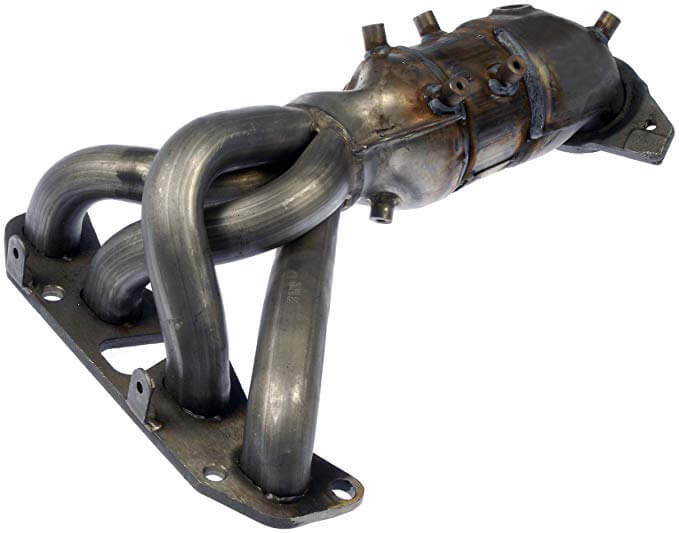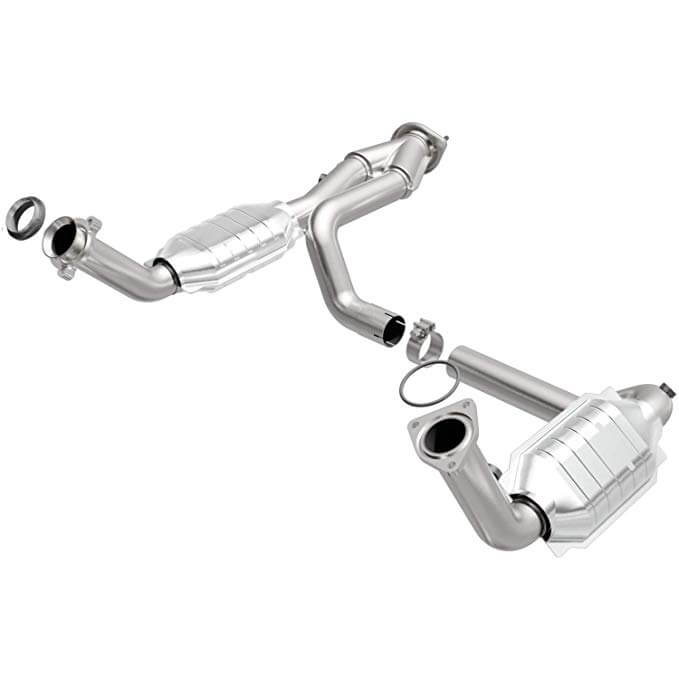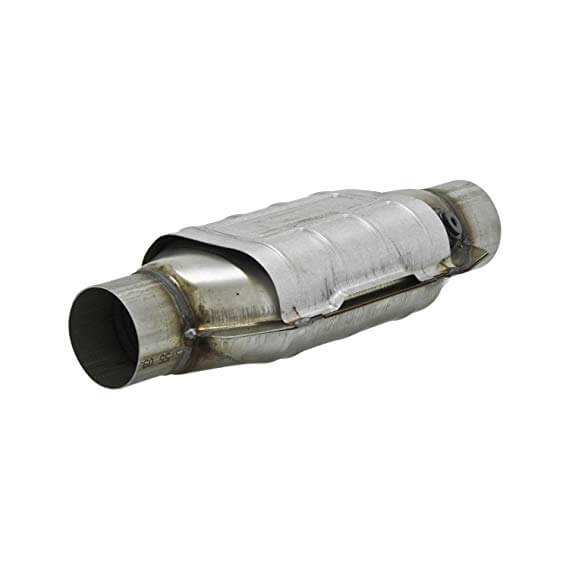
Table of Contents
A catalytic converter is a very important component in your car. As a part of emission control system, it reduces the amount of harmful and toxic gases that are released into the atmosphere. Although designed to last as long as a car, in real life it is not always like that. Anything from driving habits to engine related problems can shorten the converter’s life-span. Sometimes, it is possible to revive a clogged up converter using catalytic converter cleaners. In other cases, a converter might be damaged beyond repair, and it must be replaced with an aftermarket catalytic converter.

Best Aftermarket Catalytic Converter Reviews
A new OEM catalytic converter comes with a hefty price tag. So, if your car is out of warranty, buying one might not be economically justified. Many exhaust component manufacturers are offering a whole range of aftermarket catalytic converters. Let’s go through a selection of the best-buys.
Best Aftermarket Catalytic Converter Reviews
- Direct fit for 02-09 Toyota Camry with 2.4L engine.
- EPA compliant
- Stainless steel body
- Ceramic core
- Flange to flange, direct fit design bolts to existing exhaust
- Direct Fit for 02-06 Nissan Altima with 2.5L engine
- CARB Compliant
- Stainless Steel body
- Ceramic core
- Integrated stainless tubular exhaust manifold
- Includes gaskets, bolts and nuts
- Direct Fit for 01-05 Chevy Silverado/Suburban or GMC Sierra/Yukon with 4.8L or 5.3L engine
- CARB Compliant
- Stainless Steel body
- Ceramic core
- Flange to flange, direct fit design bolts to existing exhaust
- Universal fit, engineered to keep the “MIL” light off
- Available for a wide variety of applications,
- Pipe diameters from 2“ to 4“
- CARB Compliant
- Stainless Steel body
- Ceramic core
- Slip-fit connection type
Direct Fit Versus Universal Catalytic Converter
A direct fit catalytic converter comes with connecting tubing and has flanges on both sides. It is designed to fit directly on to the vehicle, without any metal or pipe fabrication. Assembly is a bolt-on requires only a basic tool set.
Magnaflow Catalytic Converter
With a universal catalytic converter, a story is a bit different. As the name would implicate, they have a pretty simple and straight-through design. When talking about installation, some cutting and welding will be needed, at very least. In some cases, you will need to do some additional pipe fabrication. Although all of this might be out of reach for an average DIY mechanics, a considerably lower price makes them a considerable option.
Federal Versus California Rules
Every aftermarket catalytic converter has to pass a series of tests before it can be legally sold in the United States. This is done to prove it’s ability to convert a certain amount of pollutants over a course of time. If the converter is ‘federal compliant’, this means that it meets the Environmental Protection Agency (EPA) standards. Ones that are ‘California compliant’ meet the California Air Resources Board (CARB) standards, which are higher.
For a car registered and operated in the state of California, you will have to get an aftermarket catalytic converter that is CARB compliant. For the rest of the 49 states, EPA compliant converter will do the trick. Although the State of New York has adopted CARB standards, it still allows EPA aftermarket catalytic converter.
Types of Catalytic Converters
Two-way or oxidation catalytic converter reduces the amount of carbon monoxide and hydrocarbons. They are used in diesel powered cars, as well as in older gasoline cars.
Three-way catalytic converter reduce the amount of nitrogen oxides, as well as the amount of carbon monoxide and hydrocarbons. They are used in all modern gasoline-powered cars.
Construction
- A catalytic converter casing and all the connecting piping are exposed to very high exhaust temperatures. This means it should be made from a high-quality steel. Make sure that you choose one made from stainless steel. This is especially important for catalytic converters that are integrated into the exhaust manifold.
- In most factory-installed catalytic converters, a honeycomb-like core that holds the catalyst is made out of ceramic. This is perfectly fine for standard applications, and you can go with an aftermarket converter with a ceramic core for a normal driving conditions.
- If you are towing a heavy trailer, or have done some power upgrades on your engine, an aftermarket converter with a metallic core should be your choice. As the metallic substrate has a much higher meltdown point, it can withstand high exhaust temperatures that are present in heavy-duty applications. As one would expect, such advantages don’t come cheap.
- The operating temperature in a catalytic converter is quite high. To achieve this as soon as possible, it’s casing must have a good heat insulation. Another purpose is to prevent roadside debris, such as leaves or paper, to come in contact with a very hot converter casing. As such event could result in fire, this is a very important safety issue.
How to Make Your Catalytic Converter Last Longer
Here are several tips on driving habits and car maintenance that can prolong the life of a catalytic converter.
- Frequent short trips have a negative impact on the catalytic converter, as it gets clogged. To prevent this, take your car for a longer trip on a motorway from time. Using catalytic converter cleaner fluid as a preventive measure is also a good idea.
- Using high-quality fuel will help to achieve the best running condition and better combustion.
- Proper maintenance is a key factor in the longevity of any car component, and so it is with converters. Regular oil changes with high quality oil, as well as timely filters and spark plugs renewal, will keep your engine running smoothly. This means that the converter will have an easier job.
- At the end, remember to never drive when the engine is misfiring. This is a situation where the unburnt fuel will quickly damage your catalytic converter. A shaking engine and a flashing ‘check engine’ light indicate misfire.
Recap
We hope this article on the best aftermarket catalytic converter reviews along with supporting information on how to choose one, and how to keep the CAT converter healthy was informative. Good luck in your search for a CAT converter!
 by
by 


